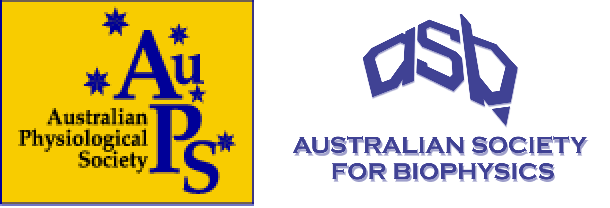| | A multiscale model of calcium release reveals a novel mechanism for calcium wave initiation | Derek Laver | 138P |
| | The relationship between muscle mass and function with bone remodelling markers in older adults: effects of acute aerobic and resistance exercise | Cassandra Smith | 139P |
| | LncRNA Tug1 regulates expression of the mitochondrial calcium uniporter complex in myotubes and cardiomyocytes. | Adam Trewin | 140P |
| | Subtype-specific block of glioblastoma motility through dual inhibition of water and ion flux | Alanah Varricchio | 141P |
| | Learning from skeletal muscle to treat metastatic cancer | Alastair Saunders | 142P |
| | New insights into assessment of mitochondrial dysfunction and oxidative stress in preclinical models of diabetic cardiomyopathy | Alex Parker | 143P |
| | Differential responses in muscle atrogene expression in a mouse model of critical illness | Amy Bongetti | 144P |
| | Effects of sex on skeletal muscle phenotype in heart failure patients | Annabel Critchlow | 145P |
| | The role of N-acetylcysteine (NAC) in reducing pathological skeletal muscle fibre branching in an mdx mouse model of human Duchenne Muscular Dystrophy | Asma Redwan | 146P |
| | Is near-infrared spectroscopy a valid method for measuring skeletal muscle microvascular blood flow? | Emily Wordie-Thompson | 147P |
| | Response of circulating miRNAs to acute exercise: A systematic Review and Meta-Analysis | Danielle Hiam | 148P |
| | Establishing a platform mediated avoidance paradigm in female rats | Elise Cleary | 149P |
| | The cardiovascular effects of mechanical ventilation | Ella Smalley | 150P |
| | Establishing a platform mediated avoidance paradigm in male rats | Fergus Scott | 151P |
| | Sex differences in cardiovascular risk factor responses to resistance and endurance training in a primary prevention cohort | Hannah Thomas | 152P |
| | What to do when Westerns go wild | Heidy Latchman | 153P |
| | Can an old dog learn new tricks? Novel applications of Microdialysis for detecting skeletal muscle reactive oxygen species and assessing microvascular endothelial function in hypertensive populations | Hollie Speer | 154P |
| | Integrative transcriptomic and proteomic analysis show circulating osteoprogenitors to have a mixed immune and mesenchymal progenitor function in humans | Jack Feehan | 155P |
| | Calcium release-activated channel activity in the uterus - CRAC-ing labour contractions | Jawaher Alfaidi | 156P |
| | A single session of high intensity interval exercise in hypoxia modulates changes in mitochondrial biogenesis related gene and protein in human skeletal muscle | Jia Li | 157P |
| | Metabolic regulation of skeletal muscle regeneration after injury | John Nguyen | 158P |
| | High-glucose ingestion and acute exercise elicit dynamic and individualised responses in systemic markers of redox homeostasis. | Lewan Parker | 159P |
| | Characterising the opposing impact of obesity and exercise training on the cardiac phenotype in mice | Nimna Perera | 160P |
| | Thyroglobulin antibodies impair fertility and litter parameters and impact fetal survival in a rodent model of Autoimmune Thyroiditis | Rebecca Brady | 161P |
| | Targeting Prostaglandin D2 in Treating Duchenne Muscular Dystrophy | Sai Yarlagadda | 162P |
| | Regeneration of mouse skeletal muscle after myotoxic injury is impacted by fucoidan supplementation | Samantha Kucewicz | 163P |
| | Utilizing a "four core genotypes" rat model to investigate sex differences in human disease | Shanie Landen | 164P |
| | Regular insulin administration increases muscle mass and exercise performance in otherwise healthy Sprague Dawley rats | Sophie Mayne | 165P |
| | Vascular RAGE and AGE binding protein expression and function in gestational diabetes. | Timothy Murphy | 166P |
| | Autophagy Flux in Human Peripheral Blood Mononuclear Cells in the 24 h Fasted and Fed State | Vicky Kuriel | 167P |
| | The urothelium and lamina propria as an alternative target for clinical antimuscarinics | Vineesha Veer | 168P |
| | What makes a good B0AT1 (SLC6A19) inhibitor? | Yashan Jiang | 169P |


